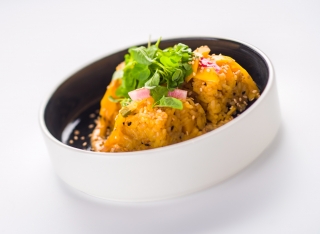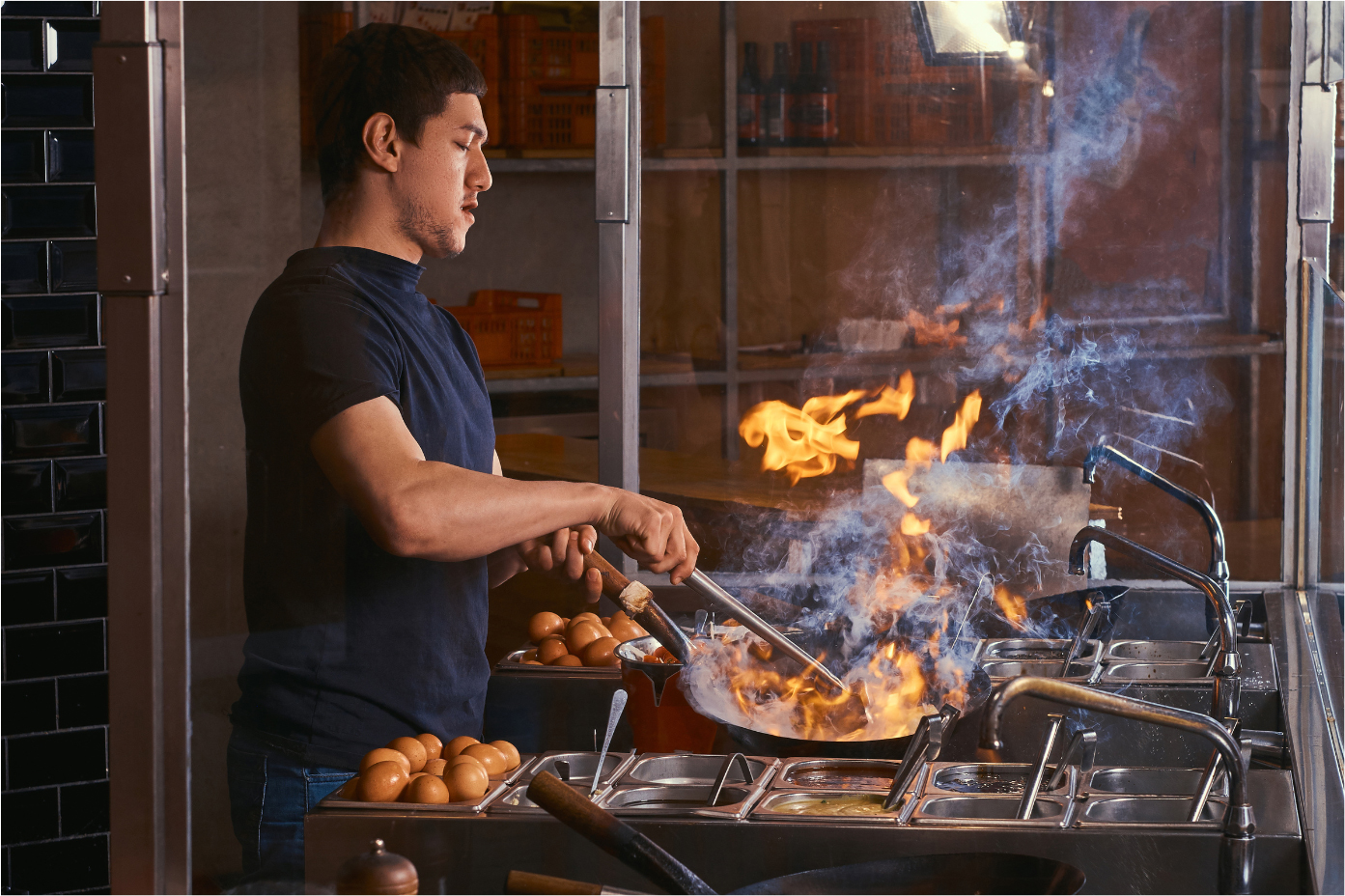
Chefs Weigh In on Top Culinary Teaching Topics for Asian Cuisine
31 January 2024Professional culinarians highlight flavor’s building blocks as key to understanding global food.
By Lisa Parrish, GMC Editor
Feedback & comments: This email address is being protected from spambots. You need JavaScript enabled to view it.
I asked three professional chefs what culinary students should know about the unique flavors and ingredients in Asian cuisine. The three responded with insight that went far beyond one global flavor or ingredient.
Thanks to our chef experts:
- Chef Kevan Vetter, executive chef and senior director of culinary development for McCormick and Company
- Chef RJ Harvey, CEC, RDN, culinary director for Potatoes USA
- Chef Jason Hernandez, founder of Blade & Tine Culinary culinary consulting firm and chef co-founder of Graze Street AMI.
What do you think students should know about Asian cuisine’s unique flavors or ingredients? Are there other culinary aspects important to know?
Chef Kevan Vetter
It’s important for budding cooks to experience these ingredients individually to first understand what and how they contribute to the aroma, flavor, texture and impact of a dish. Understanding the building blocks of a dish leads to a more successful end dish. Understanding flavor principles helps to focus on creating authentic flavors that represent the cuisine and culture of that region.
Each country within a region will have differences and nuances that can be significant so while we can classify Southeast Asia as a culinary region, chefs need to understand the differences in ingredients, techniques and flavor profiles. Students and culinary instructors can partner with local chef experts to experience these dishes and flavors in the right context. This is key developing a great foundation in flavor.
Chef RJ Harvey
It’s important to remember that the cuisines of Asia aren’t simply ingredient driven, cooking and aging techniques that influence texture/flavor are essential to the unique wonders that make Asian cuisines so dynamic and special.
 These are centuries-old techniques that spawned out of necessity. For example, take cooking potatoes. Various cooking techniques can drastically change the texture/flavor. Frying imparts a crispy texture and caramelized flavor that imparts so much in a variety of signifying dishes such as Japanese korokke (a crispy potato fritter studded with other vegetables and typically served with flavorful dipping sauces). Stir frying adds wok hei (a smoky element) that is signifying of wok cooked dishes throughout China like Sichuan Stir Fried Potatoes which compounds flavors of Szechuan peppercorns, chili oil, and the wok hei to create this delicious sensation that pleases all the senses. Grilling and charring over Binchotan charcoal, as is the case with potato mochi, not only adds a crispiness to the dish but provides a smoky element as well. Poaching or stewing potatoes in flavorful liquids such as coconut milk, rich broths, and/or curries tenderizes potatoes and makes them creamy and silky in texture. Students should think about massaman curry from Thailand, the potatoes are creamy but lend a lightness to the dish which counterbalances the tender and fatty beef in the preparation.
These are centuries-old techniques that spawned out of necessity. For example, take cooking potatoes. Various cooking techniques can drastically change the texture/flavor. Frying imparts a crispy texture and caramelized flavor that imparts so much in a variety of signifying dishes such as Japanese korokke (a crispy potato fritter studded with other vegetables and typically served with flavorful dipping sauces). Stir frying adds wok hei (a smoky element) that is signifying of wok cooked dishes throughout China like Sichuan Stir Fried Potatoes which compounds flavors of Szechuan peppercorns, chili oil, and the wok hei to create this delicious sensation that pleases all the senses. Grilling and charring over Binchotan charcoal, as is the case with potato mochi, not only adds a crispiness to the dish but provides a smoky element as well. Poaching or stewing potatoes in flavorful liquids such as coconut milk, rich broths, and/or curries tenderizes potatoes and makes them creamy and silky in texture. Students should think about massaman curry from Thailand, the potatoes are creamy but lend a lightness to the dish which counterbalances the tender and fatty beef in the preparation.
All in all, the cuisines of Asia are vast, complex, exciting, and cravable thanks to varied cooking techniques and a large array of ingredients.
Click here for a PDF detailing a few facts about potatoes in China. For instance, potatoes have been grown in China for more than 400 years and they are a staple in many regions of China and Japan and a popular snack in Korea and Vietnam. The PDF also lists several Asian-inspired dishes.
Chef Jason Hernandez
The advice I would give to students is explore, research, read and follow different social media handles. Don’t be afraid to try new things. Cooking has been going on since the beginning of time and to create something completely new is not new. That is ok. You should research and discover what else is out there. TASTE !!!!!!! You can get to know what different cuisines taste like and then decide what flavors do you know and which ones do you not know. Nothing is off the table. Can you mix mango with spicy chili crunch? Absolutely! Can you make a spicy mango wonton soup? Absolutely! Mango Larb Sticky rice? Absolutely!! TASTE!!!!
Don’t miss this issue’s complementary article, Three expert chefs offer a detailed tour through Asian cuisine.” The article provides insights on ingredients, flavors and dishes indicative of East and Southeast Asia.
